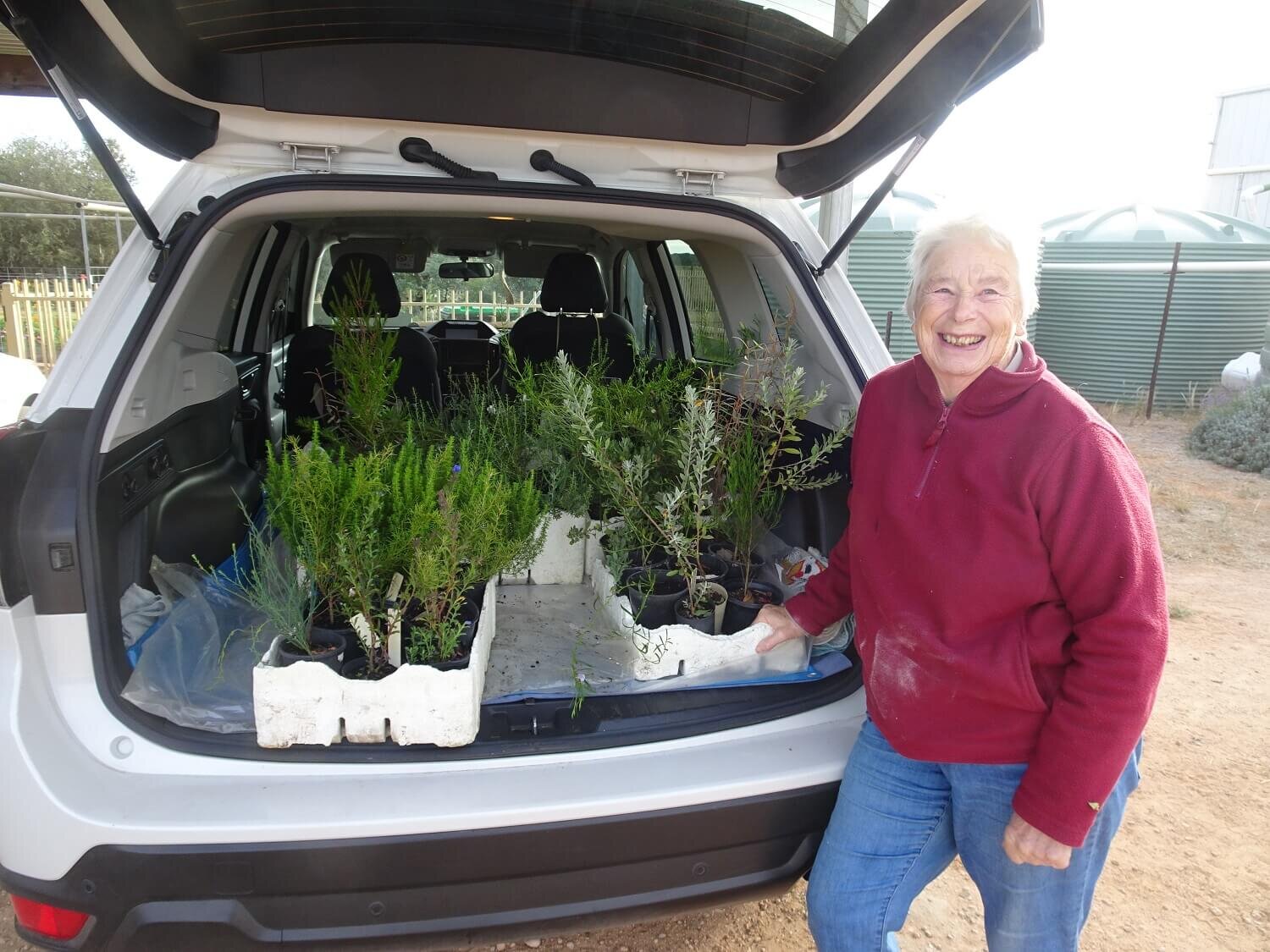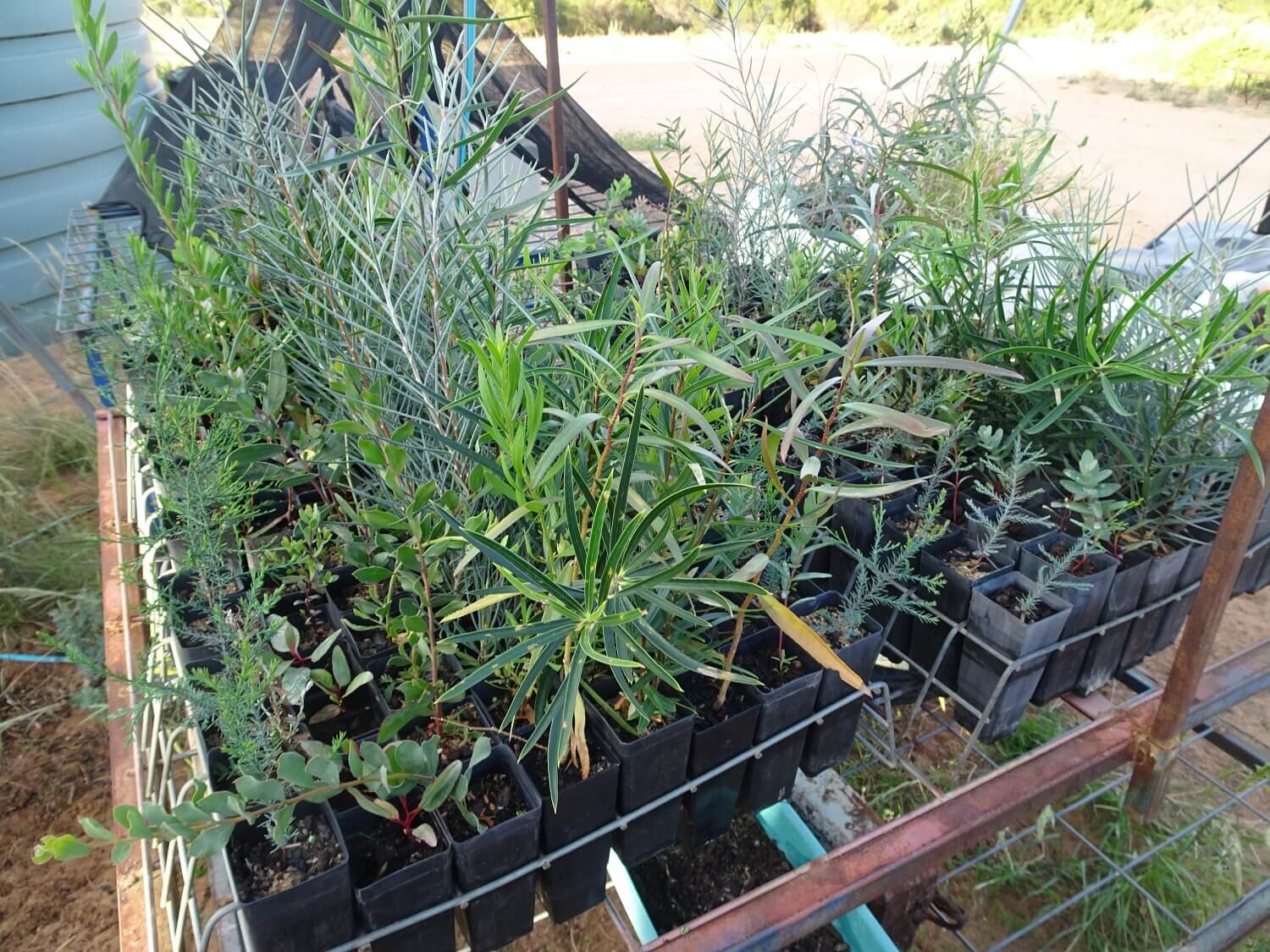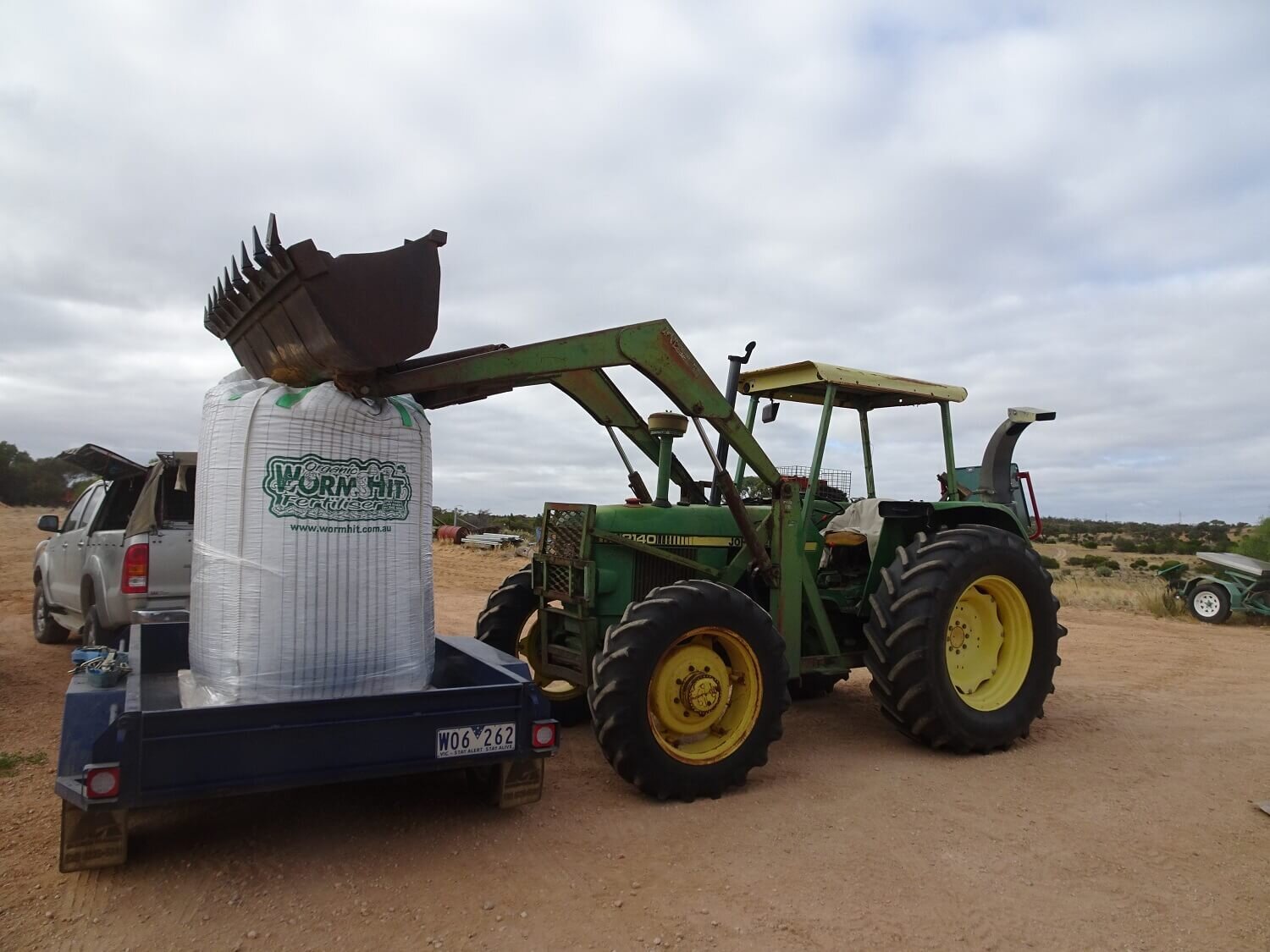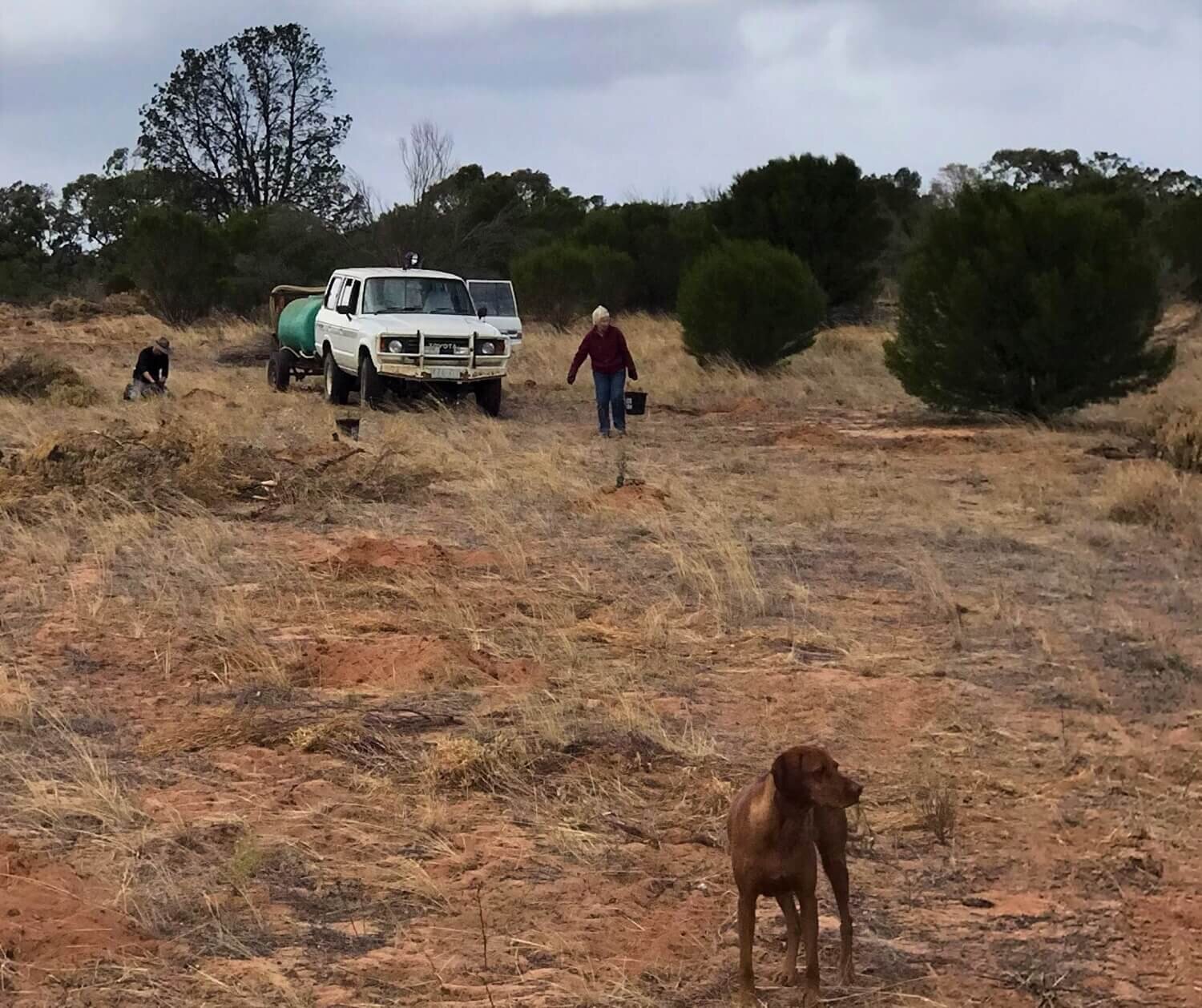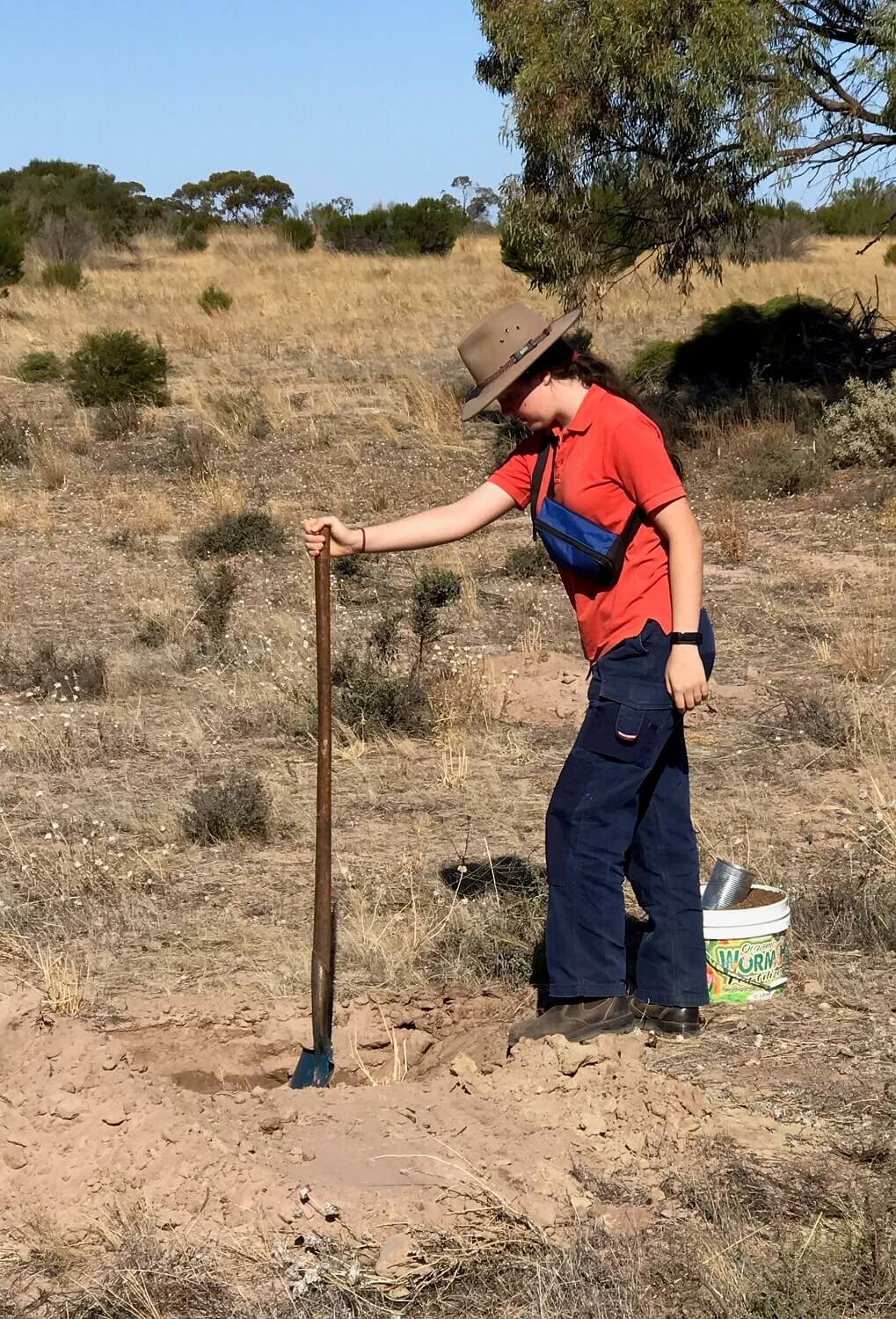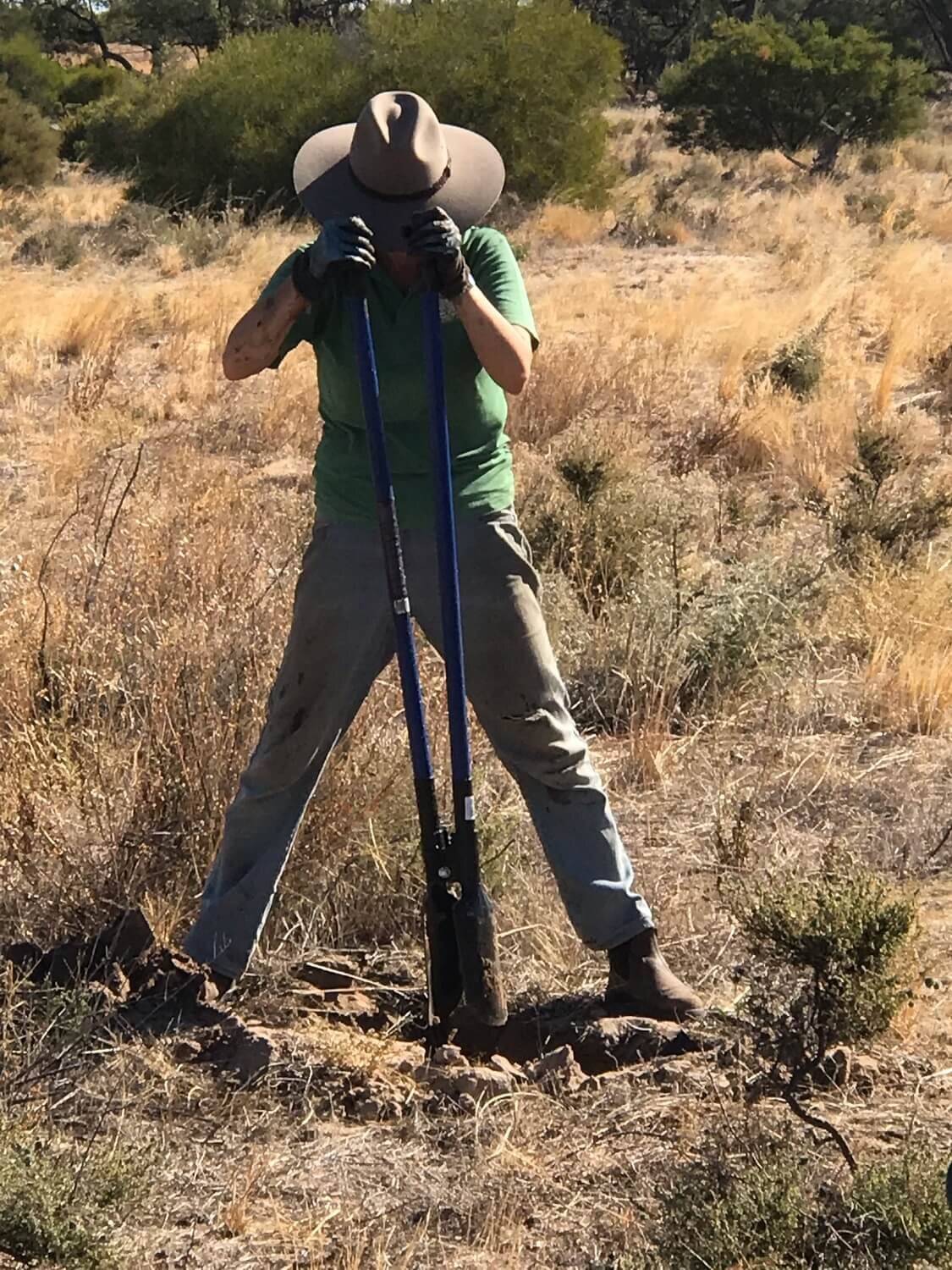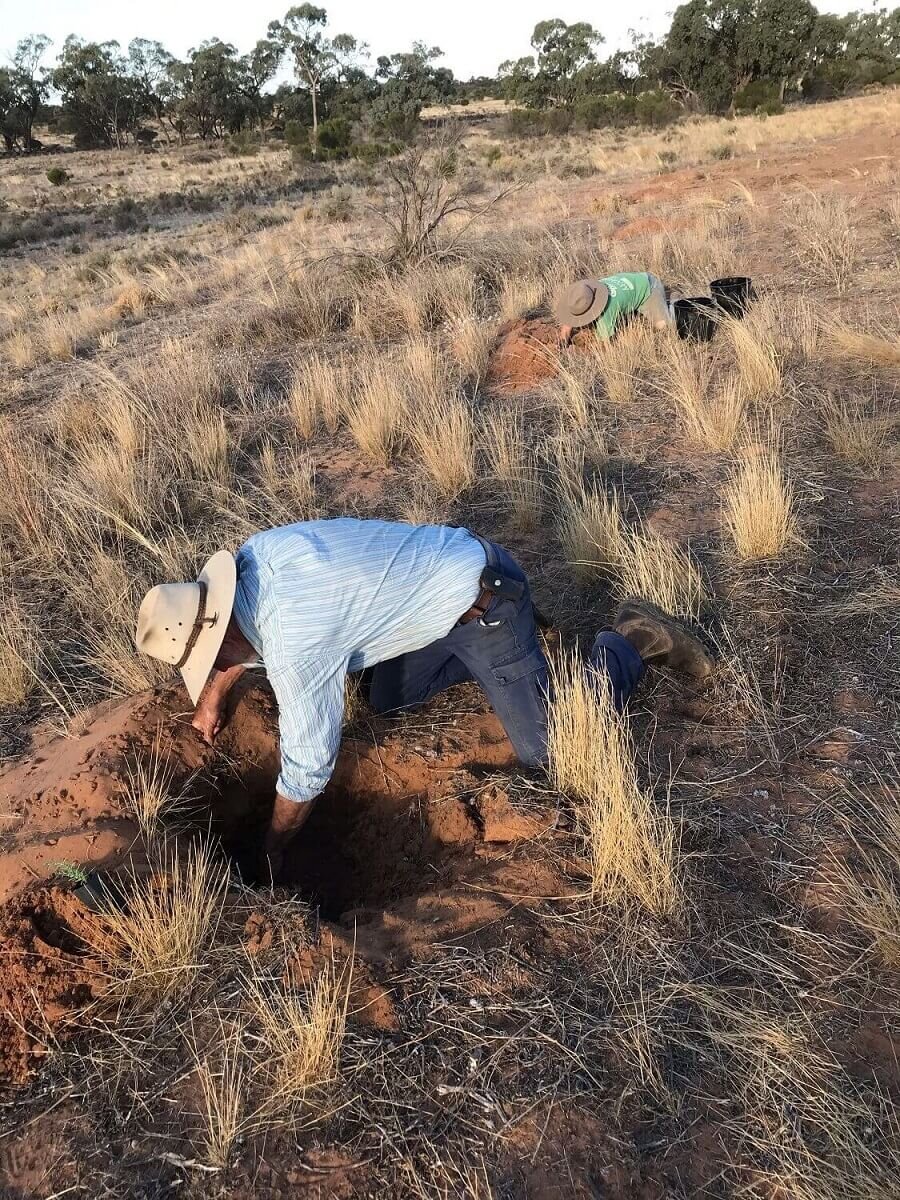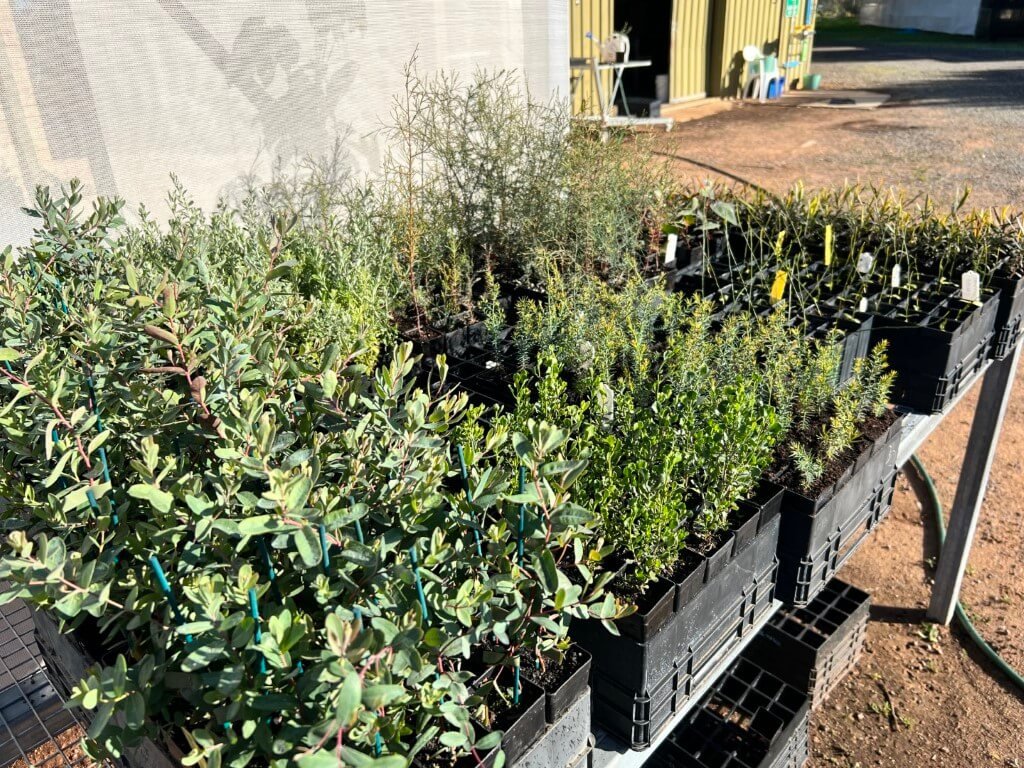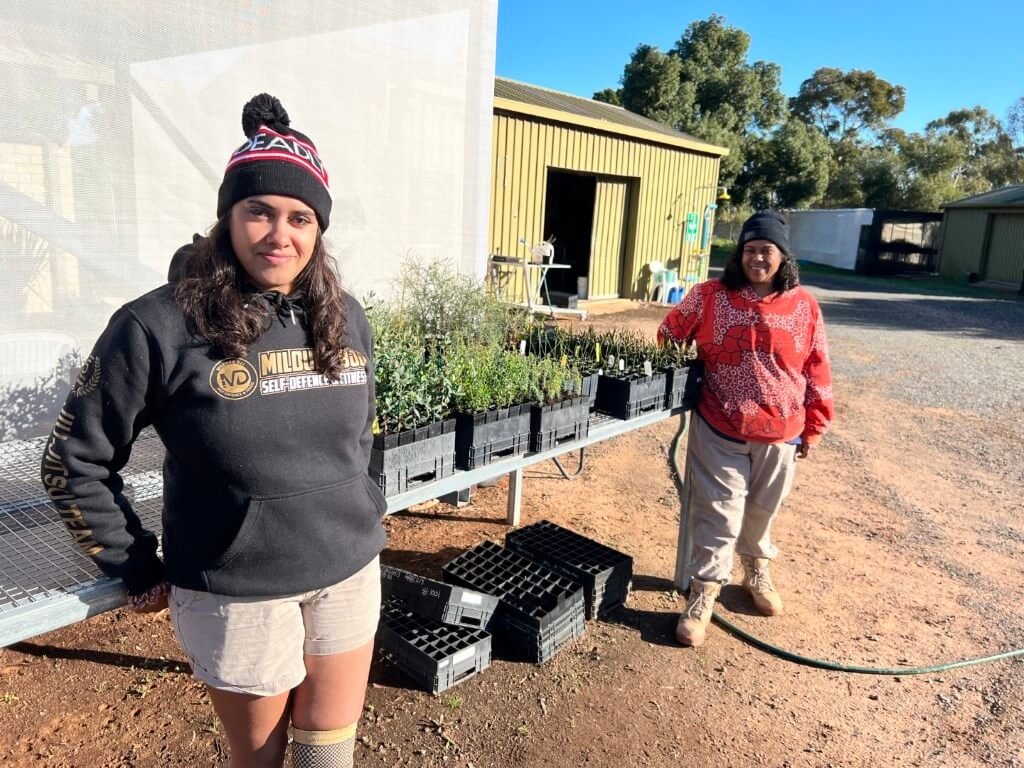Tree planting in the Mallee
Calling all volunteers! Check in with us around April because it is tree-planting time. Come and create some Mallee habitat with us!
You're invited to the Raakajlim property near Colignan on the northern edge of Hattah Kulkyne National Park. Spend a day outside in the beautiful Autumn weather, dig in the soil and plant some trees. All you need is a hat, water, gloves, and a shovel if you have one. Lunch is provided.
You'll be amongst like-minded people, building some Mallee habitat together, and having fun!
When to plant trees in the Mallee
We plant our revegetation in April. Sometimes the soil is still dry at this time of year but we prepare the holes well and pre-water them a week or so before planting out. In previous years we have waited for the first rains of Autumn: the “Autumn break”. However, the break seems to be coming later and later (thanks to climate change). If we wait until May or June, we’ve found the plant doesn’t have enough time to establish before the winter frosts kick in. Then the plants remain small and don’t develop strong roots. That can lead to death as they struggle through their first summer. April planting works for us.
Soil amendments for healthy soil
We’ve switched from using slow-release chemical fertiliser to an organic, pelletised soil amendment called Worm Hit. It’s made locally from dried and compressed worm casts. Along with regular watering, we believe the pellets boost soil microbiology in our deep sand. This helps our revegetation establish stronger roots so it grows better. We’ve been really impressed with the results so far. We’ve learnt not to be stingy and use about 500g per plant. We bought it by the tonne so it works out to about $0.55 per plant. Getting the 1-tonne bag into the shed was a challenge!
We also use Seasol Plus when we are preparing the planting holes. This is a commercial-grade seaweed product with added fish and humates. Humates are a source of humic acid. This is a stimulant for underground life, the building blocks of healthy soil.
In 2023, we will be trialling some other products - Fulvic acid and Biostimulants (Best Farming Systems) to “wake-up” dormant soil microbes. I’m learning a lot about how important soil health is for revegetation success. I’ll let you know how it goes.
How we plant trees in the Mallee
You might notice we do things a bit differently from what you might consider normal tree planting. Every year we try to improve our method to increase the survival of tube stock in our dry climate (rainfall of 250-300 mm per year).
We collect and grow our own seeds for the tube stock. We can manage about 400 plants in our tiny nursery, which is also about the number we can manage to keep watered through their first year. We also outsource some tricky species for my mum and dad to grow. They have green thumbs and fingers! More recently, the First People of the Millewa Mallee have been propagating some excellent tube stock for us at their Belar Nursery.
We plant seedlings that are generally about six to nine months old and grown in “forestry tubes” (50mm wide x 120mm deep). Check your seedlings aren’t too old. Truly, it is a waste of time to plant seedlings that are root bound in the pots. They rarely thrive.
Prepare the planting area:
We use an excavator to dig a deep basin for the tree. This is a bit like ripping the planting lines to let the moisture in but with less soil disturbance.
We space our holes at least 5m apart and the rows 10-12m apart. It seems like a lot but you need to think of how wide the trees and shrubs will be in about 50 years …
Yes, we often plant in rows. We don’t like it, but it does make the follow-up watering easier. Over time the rows soften, particularly with wiggly direct seeding lines between them.
Planting out
A week before planting, add about 15L of water per hole if there hasn’t been any rain.
On planting day:
Dig out the basin with a shovel. Ensure that the soil is placed on the downhill side so it forms a tiny catchment dam.
Mix about a tablespoon of Seasol Plus (seaweed, fish and humate) with a bucket (9L) of water - we use a squeezable, plastic sauce bottle to squirt the Seasol in. Soak the tube stock briefly in the Seasol mix - it minimises damage to roots when getting the plants out.
To the hole, add:
1/2 tbsp of water holding crystals (not too much or they swell with the first rain, forcing plants out of the hole like a small volcano!)
500g Worm Hit (we use an empty 825g fruit tin to measure this)
The full bucket of Seasol mix
Mix well into a wet slurry.
Gently plant the seedling in the planting hole:
Plant it on the northern edge - this provides a bit of shade in summer.
Be especially gentle with the roots - no need to “tickle” the roots if your tube stock is well-grown.
In the hole, the potting mix should just be covered. The plant inside the hole will be well below normal ground level. Don’t worry, the hole will gradually fill in over time and you need this deep basin so you can water the seedling throughout the first summer.
Water the seedling with another half bucket (4L) of water - this will settle the plant in, no need to compact the soil around it.
Protect from grazers. We don’t use tree guards because our conservation fence manages grazing pressure. You must protect seedlings from grazers.
Follow-up watering
You will need to water the plants to maximise survival. Keep an eye on soil moisture. If in doubt, water the trees deeply with about 10L of water each time. This can be up to every fortnight in a hot, dry summer.
The deep basin makes it easier to water deeply because it holds the full 10L of water. It gradually fills in over time, but by then the plant is well-established and growing strongly (hopefully).
By the way, you might think our planting holes are outrageous, but I love this video from Kenya of their planting holes in the desert https://www.facebook.com/GoWasteEd/videos/3481507775305497/
Updated May 2023

